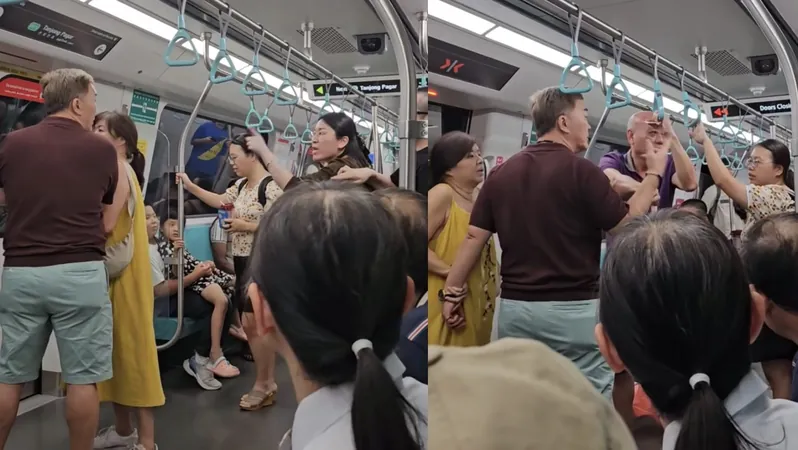
Exploring the Atmospheres of Solar System Moons and Pluto: Surprising Discoveries Await!
2024-10-08
Author: Sarah
Introduction
The vast expanses of our Solar System reveal a fascinating array of atmospheres, each with unique characteristics shaped by their celestial environments. Scientists classify these atmospheres into four main categories: “terrestrial,” “Jovian,” “condensable,” and “exosphere.”
Collisional Atmospheres of Smaller Celestial Bodies
While we commonly think of atmospheric phenomena on the larger planets, it is intriguing to note that smaller celestial bodies also host collisional atmospheres. Among these are Jupiter's moon Io, known for its intense volcanic activity, Saturn's moon Titan, which boasts a dense atmosphere and liquid methane lakes, Neptune's icy moon Triton, and the dwarf planet Pluto.
Key Attributes of Extraterrestrial Atmospheres
This exploration dives deep into the key attributes that define these enigmatic atmospheres. We examine their thermal structures, which dictate temperature variations; their chemical makeup, shedding light on the presence of various gases; and wind patterns that dictate atmospheric dynamics. Furthermore, we investigate the origins of these atmospheres, how they are retained, and the processes that lead to their eventual loss over time.
Influence of Surface Ices and Liquids
A particularly notable aspect of these extraterrestrial atmospheres is the influence of surface ices and liquids. For instance, Titan’s surface interactions with its thick nitrogen-rich atmosphere create an intricate system of weather patterns, unlike anything on Earth. Additionally, atmospheric hazes play a crucial role by affecting light absorption and surface temperatures, leading to fascinating climatic consequences.
The Space Environment and Its Effects
The space environment surrounding these moons and dwarf planets also significantly influences their atmospheric conditions. For example, a moon's proximity to its giant planet can enhance atmospheric stripping due to intense gravitational forces and radiation. This intersection of conditions is key to understanding why some moons possess vibrant atmospheres while others remain barren.
Looking Ahead to Future Explorations
As we look ahead to future explorations, the study of these atmospheres promises to unveil the mysteries of our Solar System, potentially providing clues to the origins of life itself. Researchers are particularly eager for upcoming missions that may delve deeper into the atmospheric phenomena of these elusive worlds.
Acknowledgements
In this article, we pay homage to the invaluable contributions of Prof. Zuo Xiao (1936-2024) from Peking University, whose work in planetary sciences inspires a new generation of researchers to further unravel the secrets of our cosmic neighborhood.
Conclusion
Stay tuned for more captivating discoveries about our celestial companions as we continue to explore the wonders of the Solar System!




 Brasil (PT)
Brasil (PT)
 Canada (EN)
Canada (EN)
 Chile (ES)
Chile (ES)
 España (ES)
España (ES)
 France (FR)
France (FR)
 Hong Kong (EN)
Hong Kong (EN)
 Italia (IT)
Italia (IT)
 日本 (JA)
日本 (JA)
 Magyarország (HU)
Magyarország (HU)
 Norge (NO)
Norge (NO)
 Polska (PL)
Polska (PL)
 Schweiz (DE)
Schweiz (DE)
 Singapore (EN)
Singapore (EN)
 Sverige (SV)
Sverige (SV)
 Suomi (FI)
Suomi (FI)
 Türkiye (TR)
Türkiye (TR)